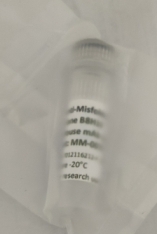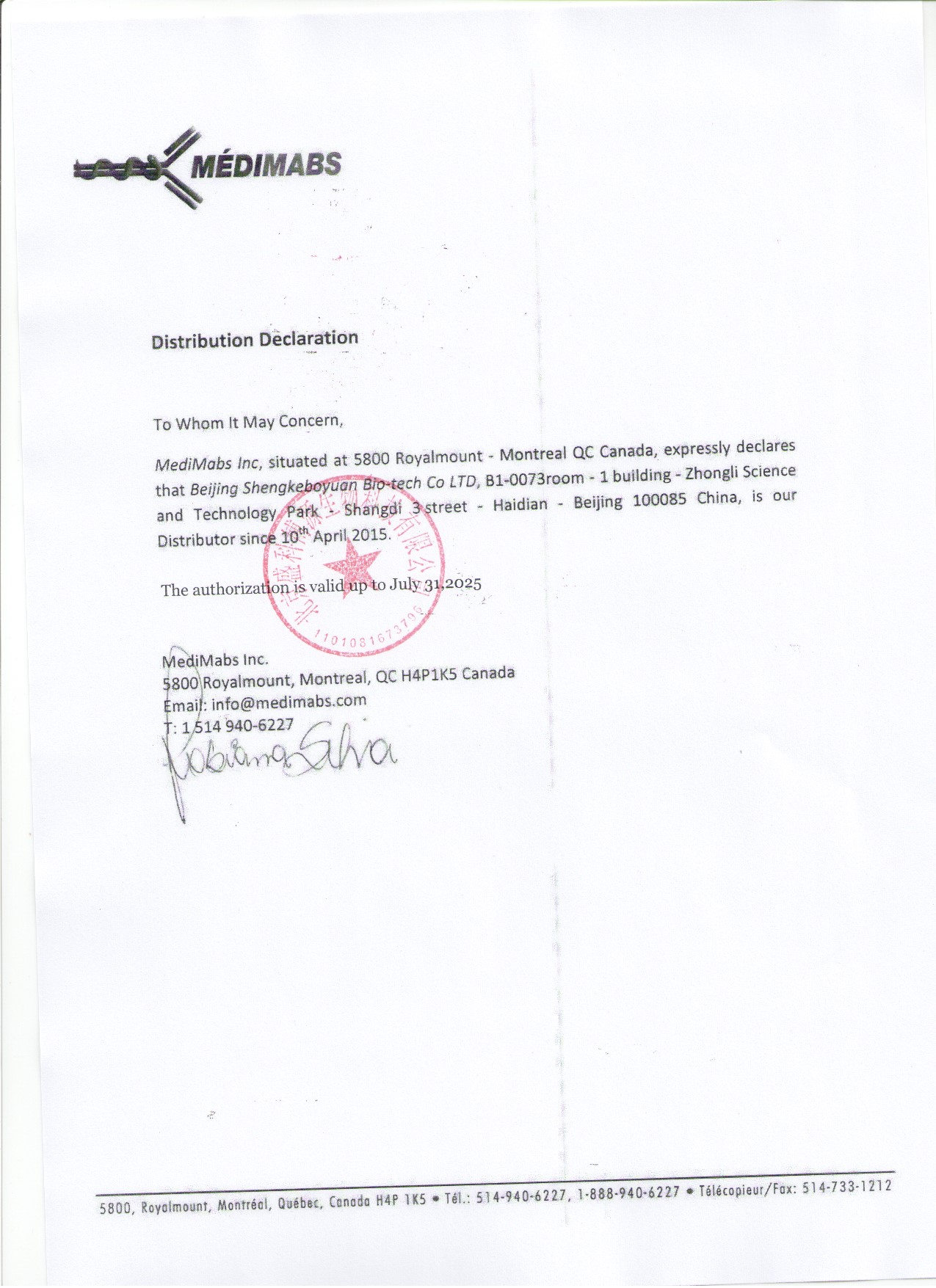 首页>
生物试剂
首页>
生物试剂
商家描述
商家资质信息
产品评价(0)
Target
SceD Protein
Target background
SceD is a putative lytic transglycosylase of Staphylococcus aureus. It has been demonstrated to be essential for nasal colonization and S. aureus virulence. SceD is required for normal growth and for successful host-pathogen interactions of S. aureus. Inactivation of SceD results in impaired cell separation and increased degree of clumping.
Target alias
Probable transglycosylase SceD
Immunogen
Full length SceD
Specificity
The antibody recognizes the full length SceD
Clone ID
---
Preservative
Ampicillin and streptomycin, 0.05% sodium aside.
Format
Total IgY purified, stored in PBS pH 7.4 and lyophilized.
Recommend starting dilution
If reconstituted with deionized water in 100 µL: WB 1:1000. Optimal dilution has to be determined by the user. Note: Use secondary antibody anti-IgY at very high dilution (1:40 000 to 1:80 000) to avoid non-specific bands.
Limitations
Research Use Only
Storage
Lyophilized antibodies can be kept at 4ºC for up to 3 months and should be kept at -20ºC for long-term storage (2 years). To avoid freeze-thaw cycles, reconstituted antibodies should be aliquoted before freezing for long-term (1 year) storage (-80ºC) or kept at 4ºC for short-term usage (2 months). For maximum recovery of product, centrifuge the original vial prior to removing the cap. Further dilutions can be made with the assay buffer. After the maximum long-term storage period (2 years lyophilized or 1 year reconstituted) antibodies should be tested in your assay with a standard sample to verify if you have noticed any decrease in their efficacy. To limit antibody loss or degradation, BSA (final concentration 1%) and sodium azide (final concentration 0.02%) can be added to the suggested first dilution. It is important to first verify if those preservatives are compatible with your assay.
 会员登录
会员登录.getTime()%>)
 购物车()
购物车()

 成功收藏产品
成功收藏产品
